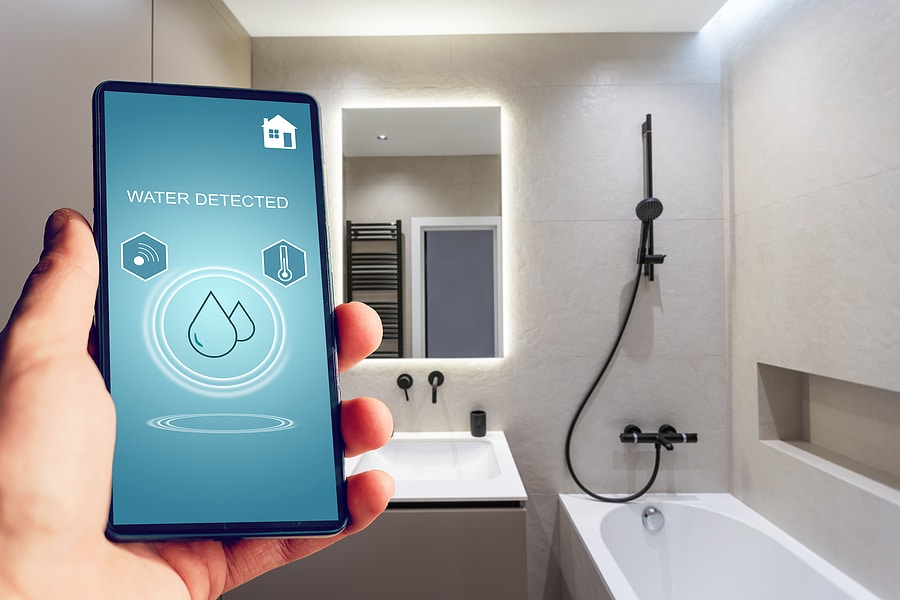
Table of Contents
Table of Contents
- Why Water Leaks Matter More Than You Think
- Common Signs Of Water Leaks
- Top Causes Of Hidden Leaks In Homes
- Easy Steps For Water Leak Detection
- When To Seek Professional Help
- Simple Preventative Tips For Every Homeowner
- Technological Solutions For Modern Leak Detection
Why Water Leaks Matter More Than You Think
Water leaks often fly under the radar, but their impact on homes is minor. Even a slow drip from a hidden pipe or leaky fixture adds up over time, wasting valuable water resources and driving up utility bills. The U.S. Environmental Protection Agency (EPA) estimates that minor household leaks waste nearly 1 trillion gallons of water annually across the country, the equivalent of the annual household water use of almost 11 million homes. It’s a staggering figure highlighting why leak prevention is crucial in sustainable living. Many people are caught off guard when a seemingly insignificant issue mushrooms into severe water damage, warped flooring, rotted drywall, or even hazardous mold growth.
What often surprises homeowners is how quickly these issues escalate when left untreated. Moisture inside walls or beneath floorboards becomes a silent hazard, weakening home structures and threatening air quality. By the time visible damage appears, repairs can become extensive and expensive. To tackle such risks early on, property owners increasingly seek thorough inspections from a Leak Detection Repair service as part of their home maintenance strategy. Not only does this minimize the threat of structural deterioration and reduce the risk of mold outbreaks, but it also helps keep utility costs under control. Being proactive truly pays off when it comes to water leak management.
Common Signs Of Water Leaks
- Noticeable and unexplained increases in monthly water bills
- The sound of running water in pipes when no faucets or appliances are active
- A constant, musty scent in certain rooms, particularly basements or bathrooms
- Bubbles or peeling in paint and wallpaper, as well as soft or discolored wall patches
- Spots or stains on ceilings, floors, or walls that don’t dry out after cleaning
Early detection of these symptoms can mean distinguishing between a minor fix and a major renovation. Household leaks can be deceptive, sometimes appearing far from their source due to traveling water. Anyone who notices a recurring wet spot or warping around cabinetry and baseboards should investigate immediately. Prompt attention is especially warranted if family members begin experiencing new allergy symptoms or respiratory discomfort, as mold thriving in damp areas is a common trigger for these outcomes. According to the EPA, a quick fix to a persistent household leak could save the average homeowner 10 percent each year on their water bill, not to mention sparing the frustration and health impact of living with water damage.
Top Causes Of Hidden Leaks In Homes
Most hidden leaks stem from issues that are either easy to overlook or develop over time as homes settle and age. Deteriorating plumbing pipes—especially those made of copper or older galvanized steel—are notorious culprits. As fittings corrode or joints loosen, drips may start slowly but eventually become significant. Home appliances like washing machines, dishwashers, and water heaters can leak where hoses, seals, or valves wear out unnoticed behind or beneath units.
Environmental effects further compound leak risks. Homes exposed to extreme temperature swings—such as those with uninsulated attics or crawlspaces—can experience pipe expansion and contraction. When water freezes in pipes, it expands, increasing the odds of rupture or joint separation. Soil movement under foundations may crack underground supply lines, causing slow leaks that saturate the ground and even attract pests. Even high water pressure, a common but overlooked issue, can stress plumbing systems and accelerate wear, creating micro-fractures that grow into leaks over time. Newer homes are not immune; poor artistry or faulty installations can just as easily lead to concealed water loss.
Easy Steps For Water Leak Detection
- Find your water meter and write down the reading. Refrain from using water for two hours, then check the meter again. If the reading changes, there may be a leak somewhere in your property’s plumbing.
- Examine all visible plumbing connections, including under-sink pipes, behind toilet fixtures, and around rooms with high water use. Look and feel for drips or pooled water.
- To test for toilet leaks, add several drops of food coloring to the tank and wait 15-30 minutes without flushing. Stains in the bowl indicate a faulty flapper, allowing water to bypass the bowl silently.
- Inspect walls and flooring for cold spots, dampness, or areas that feel softer than their surroundings. These pressure changes and moisture accumulations often precede obvious leaks.
Regular, visual inspections are invaluable, particularly in aging homes. Many public utilities and health agencies, like the Centers for Disease Control and Prevention (CDC), offer thorough guidelines, downloadable inspection checklists, and seasonal home maintenance reminders to help property owners perform these checks efficiently. Catching issues while they’re still manageable prevents escalation and helps conserve resources and budget.
When To Seek Professional Help
Some leaks are simply out of reach for the average homeowner. When damp conditions linger despite inspection, or plumbers suspect water pipe breaches beneath floors or behind walls, it’s wise to call in experienced professionals. Licensed leak detection technicians use advanced tools, such as acoustic sensors to detect escape sounds, infrared cameras to locate moisture, and even specialized tracer gases that help identify leaks in pressurized systems. These methods are accurate and minimize property disruption, often pinpointing the exact leak location with minimal cutting or drilling.
If you notice mystery stains, recurring mold, or persistent water pooling in your yard, the underlying problem might be complex. Sewer and mainline leaks, for example, require immediate intervention, not only for property protection but also for the health and hygiene of inhabitants, which addresses total cost and risk of repair. Insurance claims related to unchecked water damage are among the highest in the home sector, second only to fire. Relying on professional expertise allows for accurate diagnosis and creates a solid action plan to restore your home swiftly.
Simple Preventative Tips For Every Homeowner
- Wrap and insulate all water pipes in exposed or unheated rooms to prevent freezing and bursting during the winter.
- Check the water hoses on washing machines and dishwashers every six months and replace them if they show signs of bulging or cracking. Stainless steel braided hoses are far more durable than rubber or plastic options.
- Consider installing inexpensive water alarms near frequently used plumbing fixtures and in the basement. These sensors sound alerts when they detect moisture, allowing immediate intervention.
- Monitor water pressure using a gauge attached to an outdoor spigot; keeping household pressure below 80 psi helps protect pipe integrity and minimizes stress.
- Arrange for a full-home plumbing inspection by a licensed professional every two to three years, even if no problems are apparent. Preventive checks catch potential trouble spots before they escalate.
These habits are simple, cost-effective, and proven to minimize the odds of serious leaks significantly. Replacing aged hoses every few years or insulating pipes in vulnerable corridors represents a small investment that shields you from far greater expenses later. In the long run, regular maintenance and routine awareness are a homeowner’s best tools for preserving property value and peace of mind.
Technological Solutions For Modern Leak Detection
Digital technology is transforming how homes manage water use and prevent leaks. Affordable smart water sensors can be placed near bathrooms, kitchens, or laundry rooms—areas most susceptible to leaks. These devices detect moisture at its earliest appearance and send smartphone notifications directly to the homeowner anywhere in the world. More advanced setups feature automatic shutoff valves that seamlessly integrate into home automation platforms, stopping water flow when a sudden spike is detected.
Studies suggest that single-family residences equipped with innovative leak detection systems can save over 10,000 gallons of water per year, enough to supply a family’s drinking water needs for several months. Many insurance companies now offer discounts for homeowners who install these leak prevention systems. Modern water management tech represents peace of mind and a clear commitment to conservation for those invested in sustainability or concerned about recurring property damage.






